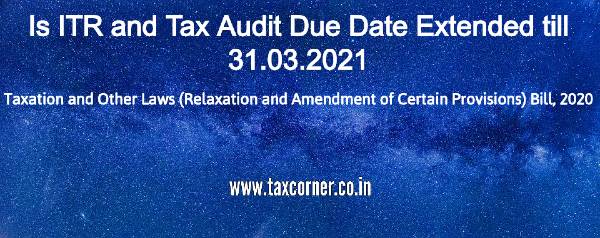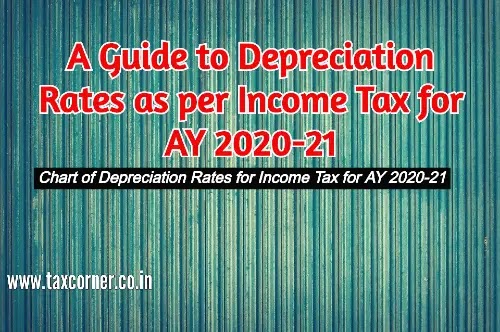The income department has launched an online income tax calculator for the financial year 2020-21 after the same is announced by the Finance Minister while presenting the Union Budget 2020 to compare tax payable as per the old income tax regime and new income tax regime to give an idea of the estimated impact of the new provisions.
The online calculator is hosted on the e-filing website. On the home page, the calculator is available under the menu 'Quick Links'.
While presenting the Union Budget 2020 the Finance Minister proposed to bring a new and simplified personal income tax regime wherein income tax rates will be significantly reduced for the individual taxpayers who forgo certain deductions and exemptions. A new section 115BAC has been introduced in the Income Tax Act, 1961 by the Finance Bill, 2020.
However, it has created confusion among many taxpayers and many of them were mixing the old method and the new method of tax computation.
The income slab and income tax rate for each slab is kept at the same level for the financial year 2020-21 (assessment year 2021-22) and it was applicable for the financial year 2019-20 (assessment year 2020-21). This is called as 'old regime' of taxation.
In other words, there is no change in the tax slab and tax rates in the old regime.
From the financial year 2021-22, a taxpayer shall have an option to pay the tax based on a new regime of taxation method as announced by the Finance Minister.
In the new regime, the total income shall be computed without certain specified deduction and exemption. Most notable are standard deduction, deduction from HRA for rent payment, a deduction for entertainment allowance and Professional tax, an exemption for leave travel allowance, a deduction for home loan interest paid, any deduction under section 80C, 80D, 80E, 80G, 80GG, 80GGA, and many more. Certain exemptions like exemption from gratuity, leave encashment, etc. are available in the new regime also.
In other words, these deduction and exemptions are not available while computing the total income in the new regime. However, in the old regime, these deductions will be continued to be available.
In lieu of foregoing the deductions and exemptions, the income tax slab and income tax rates have been kept lower as compared to the old regime.
Hence there are two income tax slab rates from AY 2021-22 (or FY 2020-21) - one is the old regime and another one is the new regime.
It may be noted that the new regime is optional. A taxpayer may or may not opt for the new tax regime and may decide to continue with the old regime.
Such an option is required to be exercised at the time of filing of the income-tax return. A salaried individual has the flexibility to opt or not to opt for every year. He can change his options every year. The law allows him to do so.
This is not the case of an individual or HUF having business income. In this case, the option has to be exercised only once, not necessarily in the AY 2021-22 itself, it can be exercised in any assessment year. But once exercised, he cannot come out of the scheme except once in a lifetime. Once he exits after opted the scheme, he can never enter the new regime again in the future.
The new scheme is only available for Individuals and HUFs.
In the budget speech, the Finance Minister said," In the new tax regime, the substantial tax benefit will accrue to a taxpayer depending upon exemptions and deductions claimed by him. For example, a person earning Rs. 15 lakh in a year and not availing any deductions, etc. will pay only Rs. 1,95,000 as compared to Rs. 2,73,000 in the old regime. Thus his tax burden shall be reduced by 78,000 in the new regime. He would still be the gainer in the new regime even if he was taking a deduction of Rs. 1.5 Lakh under various sections of Chapter- VI-A of the Income Tax Act under the old regime."
"The new tax regime shall be optional for the taxpayers. An individual who is currently availing more deductions & exemption under the Income Tax Act may choose to avail them and continue to pay tax in the old regime.," She added.
The link to the online tax calculator can be found here - Online Tax Calculator.
The calculator page looks as shown below-
The calculator calculates the basic amount of tax only and ignores the surcharge and Health and education cess. The total deduction and exemption under the new regime is assumed to be zero.
The income tax slab rates for the assessment year 2021-22 (or financial year 2020-21) is given below-
Sl. No.
|
Total income
|
Rate of tax
(Under Old Regime)
|
Rate of tax
(Under New Regime)
|
1.
|
Upto
Rs 2,50,000
|
Nil
|
Nil
|
2.
|
From
Rs 2,50,001 to Rs 5,00,000
|
5 percent
|
5 percent
|
3.
|
From
Rs 5,00,001 to Rs 7,50,000
|
20
percent
|
10 percent
|
4.
|
From
Rs 7,50,001 to Rs 10,00,000
|
15 percent
|
|
5.
|
From
Rs 10,00,001 to Rs 12,50,000
|
30 percent
|
20 percent
|
6.
|
From
Rs 12,50,001 to Rs 15,00,000
|
25 percent
|
|
7.
|
Above
Rs 15,00,000
|
30 percent
|
Surcharge: The surcharge is same for the old regime and the new regime of income tax.
Health & Education Cess: The Cess is same for the old regime and the new regime of income tax.
Note: In old regime, tax
slab for senior citizen and super senior citizen will continue with enhanced
basic exemption limit. In the case of the new tax regime, there is no benefit
of enhanced basic exemption limit is given to a senior citizen and a super
senior citizen. The basic exemption for them is also at Rs. 2,50,000 in the new
tax regime.
The online tax calculator only compares the taxes in the old and the new tax regime, for resident individuals for the financial year 2020-21.
Get all latest content delivered straight to your inbox







0 Comments